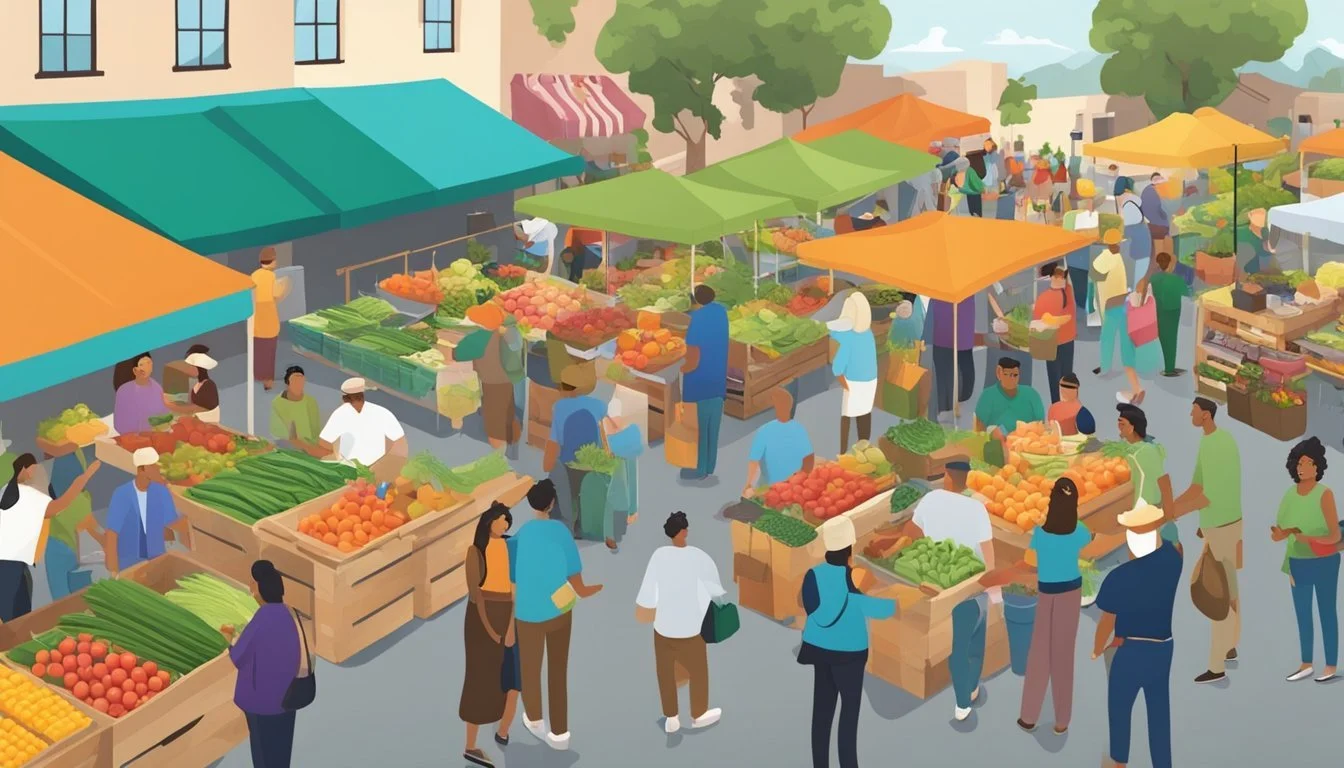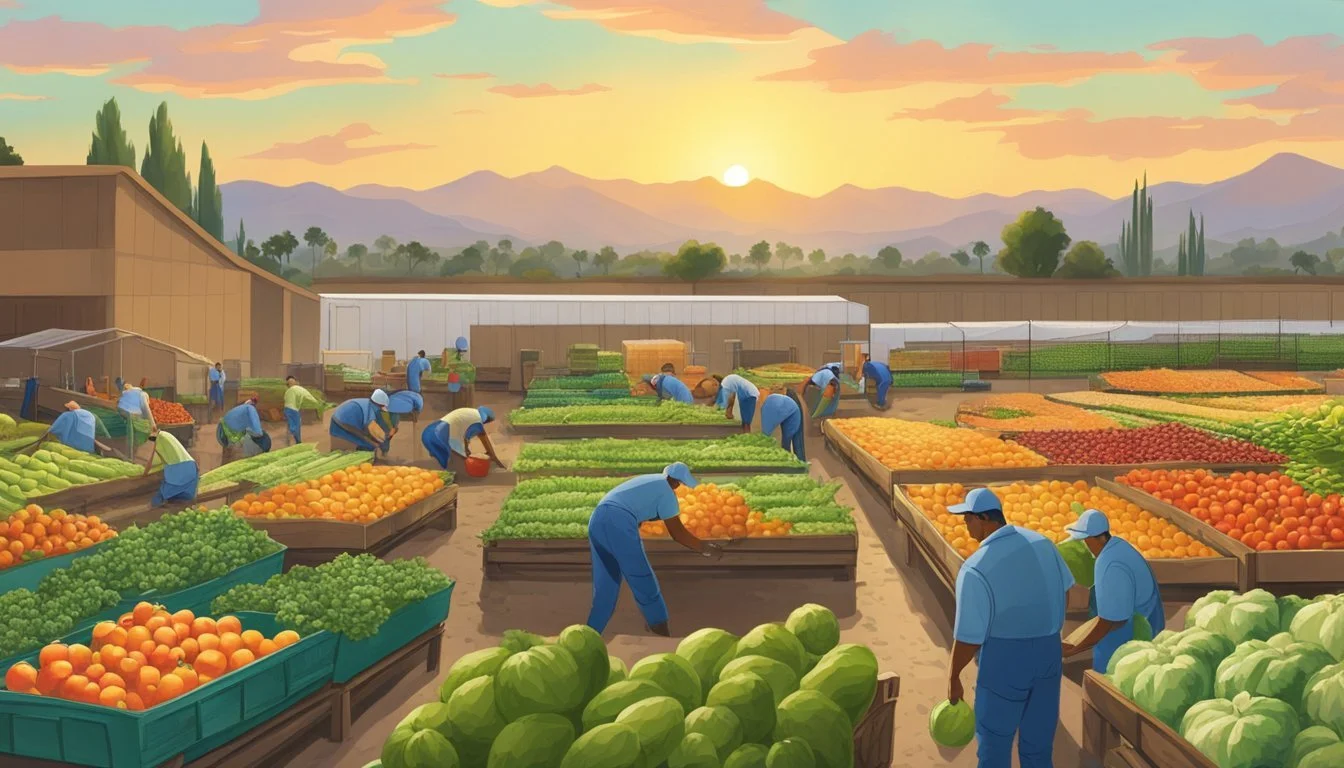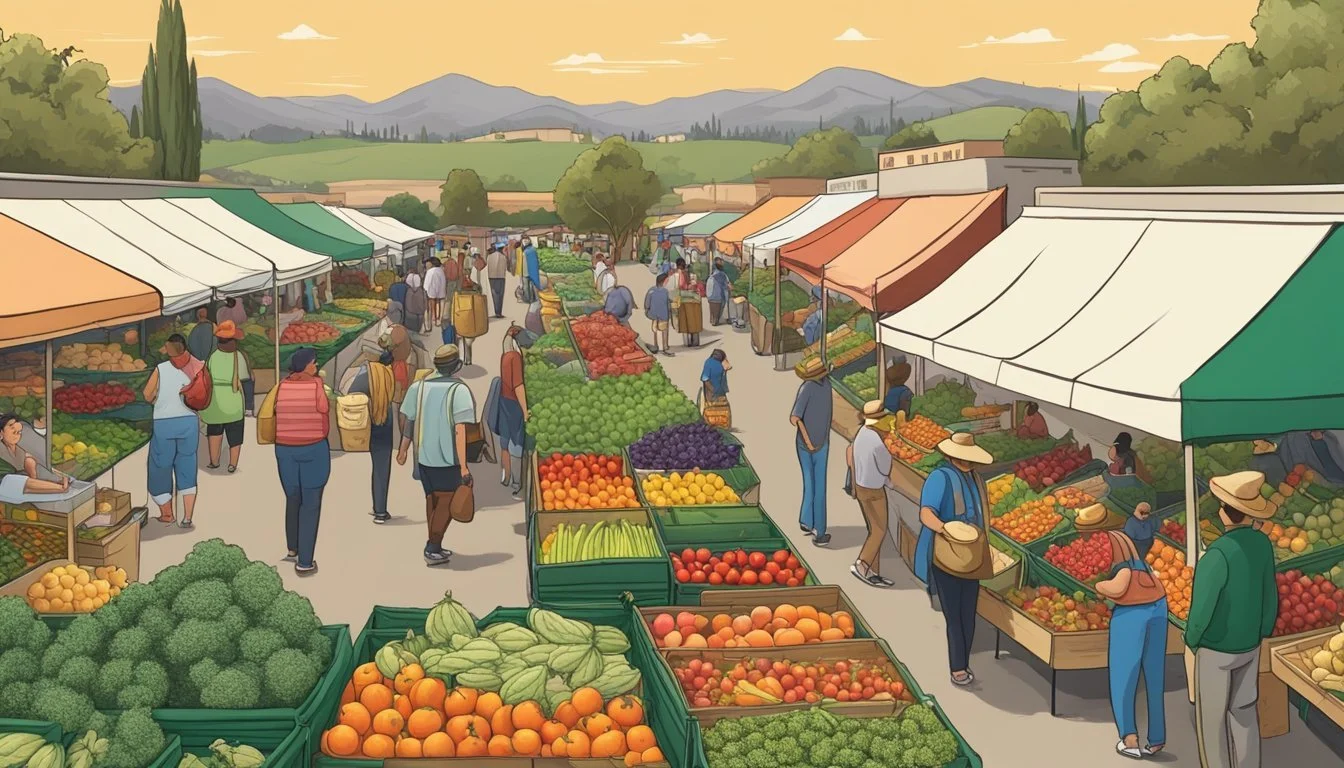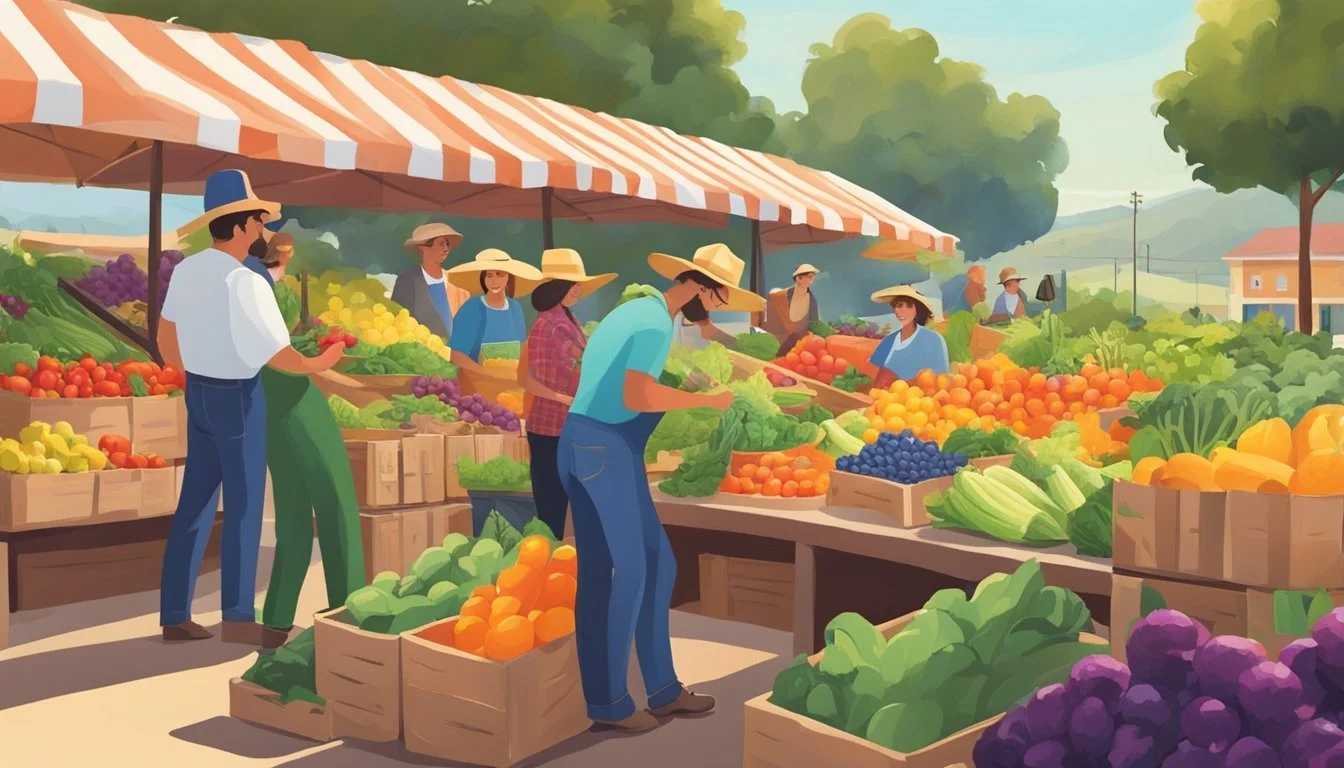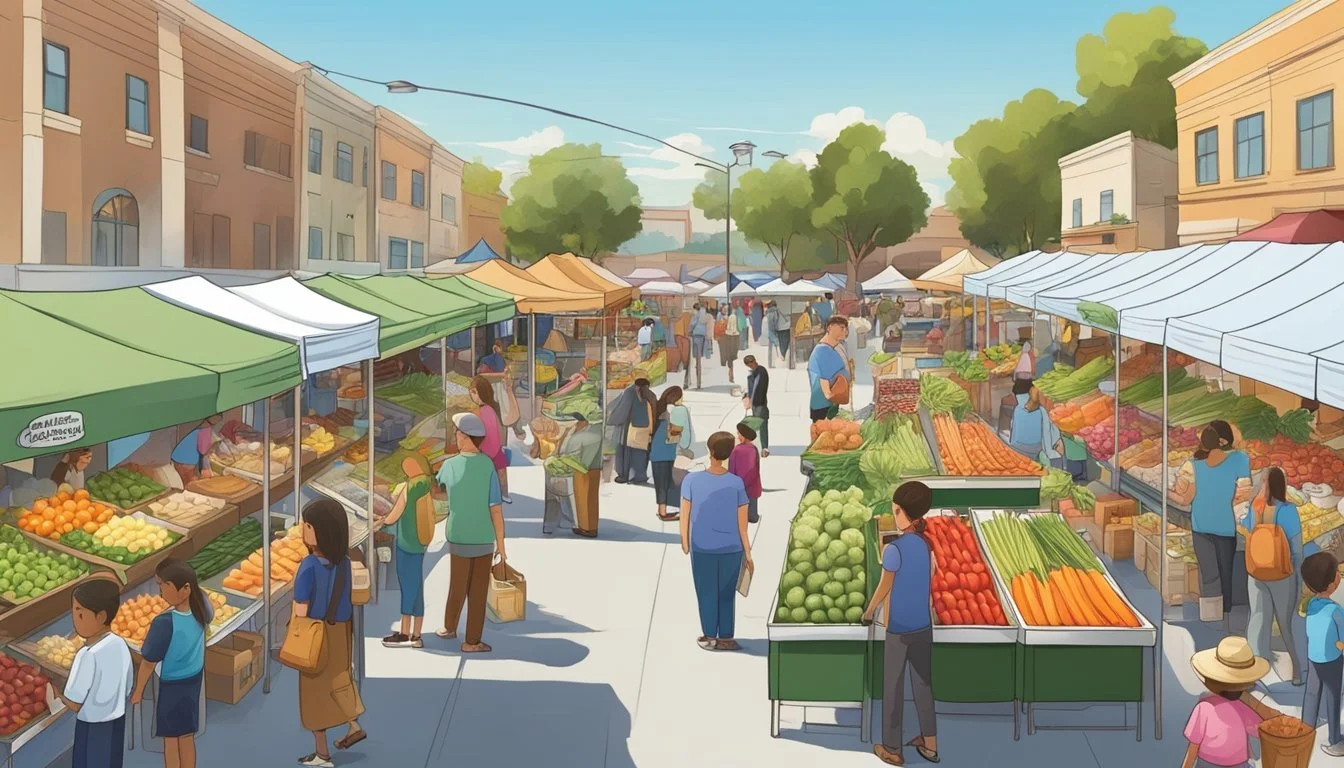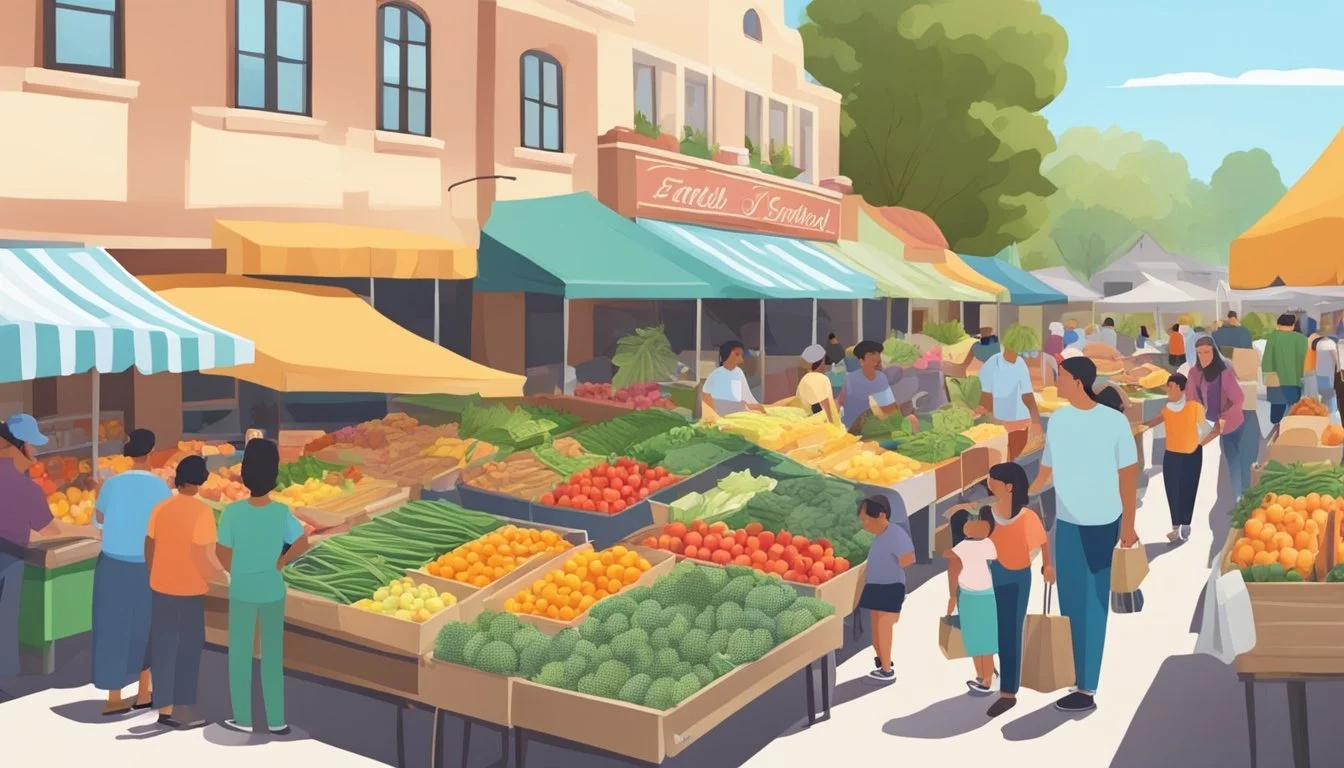Community Supported Agriculture (CSA) in West Covina, CA
A Guide to Local Produce Subscriptions
Community Supported Agriculture (CSA) has taken root in West Covina, CA, offering residents an opportunity to partake in a localized food system that reinforces community bonds while providing access to fresh, seasonal produce. In essence, CSAs allow consumers to purchase "shares" from local farms, which, in turn, supply a weekly or bi-weekly box of farm products, primarily consisting of vegetables and fruits, though some may include other items like eggs or honey.
The CSA model is more than a mere subscription service; it is a partnership between farmers and community members. Local residents become farm members and receive produce throughout the harvest season, enjoying the flavors and nutritional benefits of freshly picked goods. Furthermore, this arrangement fosters a closer connection to the food source and encourages sustainable agriculture practices.
In West Covina, CSA programs have enabled residents to support their local farmers directly, ensuring that the money spent goes back into the local economy. The exchange benefits both the producers, by providing them with upfront capital at the start of the growing season, and the consumers, who gain a deeper understanding of where their food originates. Thus, as participants invest in their health and community, they also aid in preserving the area's agricultural landscape.
Understanding CSA
Community-supported agriculture (CSA) has evolved as a mutually beneficial way to connect consumers directly with local farms. Through subscription-based memberships, CSAs foster a resilient and sustainable local food system.
Defining Community Supported Agriculture
Community-supported agriculture represents a partnership between farmers and consumers where individuals purchase a "share" of the harvest. In essence, members pay in advance for a portion of agricultural produce over a season. This model is a commitment to support a local farm, and in return, shareholders receive fresh, locally produced food regularly, typically weekly or bi-monthly.
Key aspects of CSA:
Subscription-based: Consumers subscribe for a season.
Share: Members receive a portion of fresh produce.
Direct support: Farmers benefit from upfront payments.
Benefits of Joining a CSA
Members of a CSA enjoy several advantages, including access to fresh, seasonal food. Joining a CSA also promotes healthier eating habits through a diverse array of produce. Additionally, it underlines a commitment to ecological sustainability, as local farms often employ environmentally friendly farming practices.
Advantages for Consumers:
Access to seasonal, fresh produce.
Encourages a diverse diet with a variety of vegetables and fruits.
Supports sustainable agriculture practices.
How CSAs Strengthen Local Food Systems
CSAs are integral to reinforcing local food systems by ensuring that food production is more closely linked with its consumption. This system minimizes the distance food travels, thereby reducing carbon emissions and promoting ecological balance. The direct relationship forged between farmers and the community also bolsters local economies and safeguards farming livelihoods.
Local Economies: Direct consumer support benefits farmers financially.
Reduced Transport: Less transport means a reduction in carbon footprint.
Food Security: Ensures a consistent market for farmers and fresh food availability for consumers.
CSA Operations in West Covina
Community Supported Agriculture in West Covina embraces a partnership between local farmers and residents, focusing on the distribution of fresh, seasonal produce through membership-based models.
Local CSA Farms
In West Covina, several CSA farms strongly emphasize organic farming practices and strive to maintain a transparent relationship with their members. These farms often list their produce on platforms like LocalHarvest to ensure residents have access to the latest information about available produce and farm details.
Seasonal Produce Offerings
CSA subscribers in West Covina receive a diversity of seasonal fruits, vegetables, and often flowers. The produce available varies throughout the year, with offerings such as citrus fruits in winter and leafy greens in spring. This model supports crop rotation and sustainable farming practices, which benefit both the soil and the local ecosystem.
Subscription and Membership Models
Subscriptions usually run on a weekly or bi-weekly basis, and members can choose between different sizes of produce boxes. The membership model in West Covina frequently allows for customization of orders, and farmers are keen to establish a routine that ensures the freshest picks directly from their farm to the members' tables.
The Local Impact of CSAs
Community Supported Agriculture (CSA) programs in West Covina, CA foster a robust economic and environmental synergy between residents and local farmers. These direct-to-consumer partnerships have tangible impacts on community sustainability and economic dynamics.
Economic Advantages for Farmers and Consumers
By adopting the CSA model, local farmers gain financial security through pre-season capital. Consumers purchase shares of the harvest upfront, providing farmers with the necessary funds to plan and manage their farms efficiently. This upfront economic model benefits consumers by typically offering lower overall prices for fresh produce compared to retail, as there is a direct transaction with the producer with no middlemen involved.
Furthermore, farmers' markets in West Covina that partner with CSAs allow consumers to supplement their shares with additional goods, fostering a local marketplace where dollars circulate within the community, bolstering the local economy.
Promoting Sustainable and Regenerative Practices
CSAs inherently support sustainable and regenerative farming practices. By directly engaging with the community, farmers are encouraged to maintain environmentally friendly operations. Local CSA farms in West Covina often employ techniques such as crop rotation, composting, and reduced chemical use which contribute to soil regeneration and less environmental impact.
The CSA model also significantly reduces the carbon footprint associated with food transport by emphasizing local produce consumption. This emphasis not only promotes a sustainable community but also educates consumers on the importance of regenerative farm practices and seasonality in agriculture.
Southern California's CSA Scene
Southern California offers a thriving CSA scene that encapsulates a variety of programs. These initiatives range from large-scale farm shares to impactful urban farming education, signifying a robust connection between agriculture, sustainability, and community participation.
Notable CSA Programs
In Southern California, various CSA programs cater to diverse communities, affirming the region's dedication to sustainable agriculture. Community Services Unlimited Inc. stands out as a non-profit organization that has been operational since 1977, offering CSA shares and emphasizing food justice in South Central Los Angeles. Additionally, Sage Mountain Farm, mentioned as one of the local CSA providers near Covina, offers fresh, seasonal, and locally-grown produce, demonstrating the local commitment to fostering community ties through agriculture.
Urban CSA Initiatives
Urban homesteading initiatives are instrumental in harnessing the power of local urban growers and bringing fresh produce to city dwellers. Entities like eroots, featuring local California organic and sustainably grown produce, exemplify how CSA models adapt to the urban setting. These initiatives not only provide access to fresh food within the city but also create educational opportunities for residents to learn about sustainable living and urban agriculture.
Education and Community Engagement
Education is a cornerstone of Southern California's CSA programs, integrating community engagement through various channels. The Huntley College of Agriculture has a CSA program that extends beyond supplying produce, by also incorporating an educational demonstration farm. This approach bridges the gap between consumers and the agricultural process, fostering a homegrown community co-operative spirit. Similarly, CSA is often more than just a weekly delivery; it's an investment in community, health, and a sustainable food system, revealing an educational dimension by drawing members closer to the sources of their food.
In conclusion, Southern California's robust CSA scene is a testament to the region's commitment to sustainable agriculture, community support, and education, offering a rich tapestry of options for local residents to engage with and benefit from.
Exploring CSA Produce
Community Supported Agriculture (CSA) in West Covina, CA, offers an abundance of produce options that focus on organic and locally sourced selections. Key to their offerings is the emphasis on seasonal availability, which provides consumers with fresh and diverse choices throughout the year.
Organic and Locally Grown Options
CSA programs in West Covina take pride in their commitment to organic produce. They offer a variety of fruits and vegetables that are grown without the use of synthetic pesticides and fertilizers. These organic options tend to be fresher and support the local ecosystem and economy. For example, Sage Mountain Farm, as indicated in the search results, is one such provider that prioritizes organic methods. Patrons can enjoy the ripe flavors of local Valencia orange trees and taste the difference in locally sourced grapefruit, knowing they are consuming food that is not only good for their health but also for the environment.
Notable organic produce often found in CSA boxes:
Citrus fruits like grapefruit and oranges from local Valencia orange trees
Avocados, including the creamy Fuerte avocado, directly from regional farms
Understanding Seasonal Availability
Seasonality is an essential aspect of CSA produce, where the offerings in the CSA boxes change with the growing seasons. This ensures that members receive the highest quality of produce when its flavor is at its peak. For instance, CSA members might delight in the Fuerte avocado tree harvest in late winter to spring, while Valencia oranges might be a staple in late spring to summer shares. Providing such seasonal produce supports biodiversity and reduces the environmental impacts associated with long-distance transportation.
Examples of seasonal produce typically available in West Covina CSA shares:
Spring: Fuerte avocados
Summer: Valencia oranges
By selecting a CSA in West Covina, patrons not only procure fresh, delicious fruits and vegetables but also become integral supporters of local agriculture and sustainable food systems.
Community Involvement and Support
Community Supported Agriculture (CSA) programs in West Covina thrive through a strong foundation of community involvement and support. Volunteers and educational programs are central to sustaining this cooperative spirit.
Volunteering at CSA Farms
Volunteers are the backbone of the CSA farms around West Covina. Individuals in the community can contribute by:
Assisting with planting, weeding, and harvesting crops.
Supporting CSA events and farm stands to help distribute fresh produce.
These actions not only support farmers but also reinforce communal bonds and the principles of the CSA innovation network.
Educational Opportunities
CSA programs frequently offer educational programs, aiming to:
Teach the community about sustainable agriculture practices.
Promote food literacy by connecting people, especially children, with the source of their food.
By participating, community members gain a deeper understanding of where their food comes from and the labor involved in local, sustainable farming.
CSA Models and Practices
Community Supported Agriculture (CSA) has evolved to become a crucial link between local farmers and the community. It emphasizes sustainable and ecological farming practices while fostering a closer consumer-farmer relationship.
Share Types and Sizes
CSA programs typically offer a variety of share types and sizes to accommodate diverse household needs. The large box option caters to families or individuals with greater consumption requirements, while smaller shares exist for those with modest needs. Participants usually receive weekly boxes containing a mixture of vegetables, fruits, herbs, and sometimes additional farm products.
Distribution and Pickup Logistics
CSA operations in West Covina focus on making distribution convenient for members. Pickup times are structured within reasonable hours, ensuring easy access. For instance, members might pick up their shares on Saturdays from 9:00 AM to 2:00 PM or Tuesdays from 1:00 PM to 6:00 PM. Some CSAs may also deliver directly to a member's home or a community drop-off point.
Shared Risk and Reward
The model of shared risk is central to CSA, wherein the community and the farmer mutually support each other. The community invests in shares at the onset of the growing season, providing the farmer with upfront capital. In return, share members partake in the yields of the farm. This system allows for a transparent risk-sharing arrangement, assuring that both successes and challenges are distributed among all involved parties.
Questions and Considerations for CSA Members
Selecting a CSA (Community Supported Agriculture) program in West Covina, CA, involves evaluating one's food needs and lifestyle. Members should consider what the commitment entails, from cooking to financial investment.
Selecting the Right CSA for Your Needs
When considering a CSA, members should assess their cooking habits and health goals. Ask the following:
Variety of Produce: Does the CSA offer the types of fruits and vegetables you enjoy and are likely to use?
Share Size: How much produce do you realistically need? CSA shares come in different sizes, catering to individuals or families.
Pick-up Locations: Is the pick-up location convenient for you?
Farm Practices: Are the farming methods in line with your values, such as organic or biodynamic practices?
Understanding the Commitment
Joining a CSA is a seasonal commitment to a local farm, and members should understand what this involves:
Season Length: Members typically commit for a growing season. Be clear on start and end dates and how this fits your schedule.
Cost: Understand the initial financial outlay. CSAs generally require payment upfront, and costs can range significantly.
Share Risks: Members share in the farm's bounty as well as its risks, like poor harvests due to weather conditions.
Flexibility: Some CSAs offer the ability to customize boxes or skip weeks; others do not.
Community Involvement: Many CSAs provide opportunities for members to visit the farm or volunteer, enhancing the connection to the local food system.
Members are encouraged to contact the CSA directly with any questions to make an informed decision about their commitment.
Additional CSA Resources
This section provides a curated list of resources and reading materials for those interested in deepening their knowledge about Community Supported Agriculture (CSA) in West Covina, CA, and beyond. It includes directories to locate local CSA programs and scholarly research for a comprehensive understanding of the CSA landscape.
Local CSA Directories
Local CSA directories are valuable for consumers looking to find CSA programs in the West Covina area. The LocalHarvest website is an excellent tool where individuals can discover various CSA options such as Sage Mountain Farm and the South Central Farmers' Community Supported Agriculture Program. These directories offer a snapshot of what is available, including:
LocalHarvest
Website: www.localharvest.org
Features: Detailed listings of local CSAs with search functionality to find farms near West Covina, CA.
Website: www.csainnovationnetwork.org
Purpose: A platform to foster the growth and development of the CSA movement through sharing of resources and best practices.
Research and Further Reading
For those seeking a deeper dive into the CSA model's implications and advancements, a range of research articles and materials are available. Noteworthy is the work conducted by the University of Kentucky, which provides insight into the moral economy and societal impacts of the CSA movement. Publications and research studies often explore topics such as sustainability, consumer-producer relationships, and economic impact. Some key resources for further reading include:
U.S. Department of Agriculture
Data: Provides statistics on the number of CSA farms and their share in direct-to-consumer sales.
Website: www.usda.gov
National Agricultural Library
Collection: An extensive repository of agricultural research, including papers on the CSA movement.
Website: www.nal.usda.gov
Researchers and the public alike may benefit from examining such resources, which offer a thorough examination of CSA's role in today's agricultural market and community building efforts.

